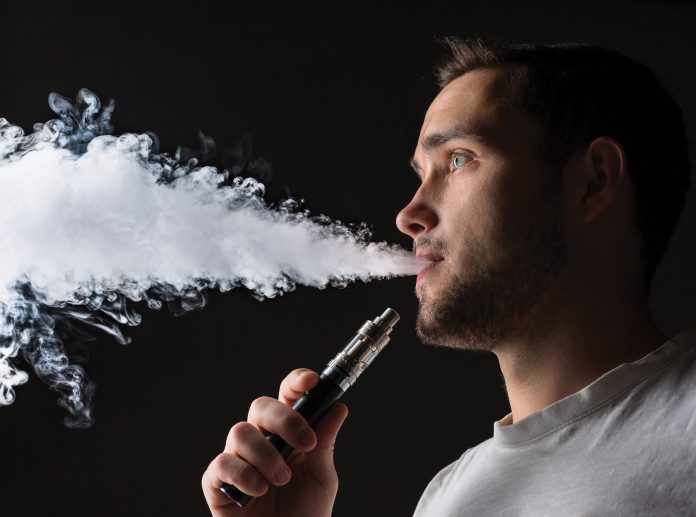
The Centers for Disease Control, the U.S. Food and Drug Administration, state and local health departments, and other clinical and public health partners are continuing to investigate a multi-state outbreak of lung injury associated with e-cigarette product use, or vaping.
• As of Sept. 24, there are 805 lung injury cases reported from 46 states and one U.S. territory. Twelve deaths have been confirmed in 10 states. The states and U.S. territory include: Arkansas, Arizona, California, Colorado, Connecticut, Delaware, Florida, Georgia, Hawaii, Iowa, Idaho, Illinois, Indiana, Kansas, Kentucky, Louisiana, Massachusetts, Maine, Maryland, Michigan, Minnesota, Missouri, Montana, Mississippi, North Carolina, North Dakota, Nebraska, New Jersey, New Mexico, Nevada, New York, Ohio, Oklahoma, Oregon, Pennsylvania, South Carolina, South Dakota, Tennessee, Texas, Utah, Virginia, Vermont, Washington, Wisconsin, West Virginia, Wyoming, and U.S. Virgin Islands. These numbers may change frequently.
• Twelve deaths have been confirmed in California (two), Florida, Georgia, Illinois, Indiana, Kansas (two), Minnesota, Mississippi, Missouri, and Oregon.
• The latest findings from the investigation into lung injuries associated with e-cigarette use, or vaping, suggest products containing THC play a role in the outbreak.
• Most of the patients reported using THC-containing products or both THC-containing products and nicotine-containing products. Some of the patients reported using only nicotine-containing products.
• All patients have a reported history of e-cigarette product use, or vaping, and no consistent evidence of an infectious cause has been discovered. Therefore, the suspected cause is a chemical exposure.
• The specific chemical exposure(s) causing lung injuries associated with e-cigarette product use remains unknown at this time.
• No single product or substance has been linked to all lung injury cases. More information is needed to know whether a single product, substance, brand, or method of use is responsible for the outbreak.
CDC data on 771 patients
• About 69 percent of patients are male.
• Nearly two thirds (62 percent) of patients are 18 to 34 years old; with 22 percent of patients between 18-21.
• 16 percent of patients are under 18 years.
• All reported patients have a history of e-cigarette product use or vaping.
• The latest findings from the investigation into lung injuries associated with e-cigarette use, or vaping, suggest products containing THC play a role in the outbreak.
CDC has received data on substances used in e-cigarettes or vaping products in the 30 days prior to symptom onset among 514 patients, The CDC found:
• About 77 percent reported using THC-containing products; 36 percent reported exclusive use of THC-containing products.
• About 57 percent reported using nicotine-containing products; 16 percent reported exclusive use of nicotine-containing products.
What is not known
• The specific chemical exposure(s) causing lung injuries associated with e-cigarette product use, or vaping, remains unknown at this time.
• No single product or substance has been linked to all lung injury cases.
• More information is needed to know whether one or more e-cigarette or vaping products, substances, or brand is responsible for the outbreak.
Key facts about e-cigarette use
• Electronic cigarettes – or e-cigarettes – are also called vapes, e-hookahs, vape pens, tank systems, mods, and electronic nicotine delivery systems.
• Using an e-cigarette product is commonly called vaping.
• E-cigarettes work by heating a liquid to produce an aerosol that users inhale into their lungs.
• The liquid can contain: nicotine, tetrahydrocannabinol (THC) and cannabinoid (CBD) oils, and other substances and additives. THC is the psychoactive mind-altering compound of marijuana that produces the “high.”
While this investigation is ongoing, CDC recommends that you consider refraining from using e-cigarette, or vaping, products, particularly those containing THC.
• If you are an adult who used e-cigarettes containing nicotine to quit cigarette smoking, do not return to smoking cigarettes.
• If you have recently used an e-cigarette or vaping product and you have symptoms like those reported in this outbreak, see a health care provider.
• Regardless of the ongoing investigation, noone who uses an e-cigarette or vaping product should not buy these products (e.g., e-cigarette or vaping products with THC or CBD oils) off the street, and should not modify or add any substances to these products that are not intended by the manufacturer.
CDC continues to work closely with FDA, states, public health partners, and clinicians on this outbreak.
© 2019 Metro Monthly. All rights reserved.




